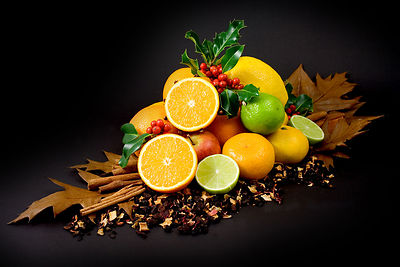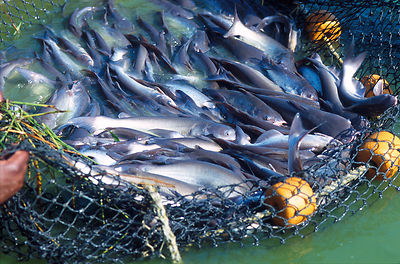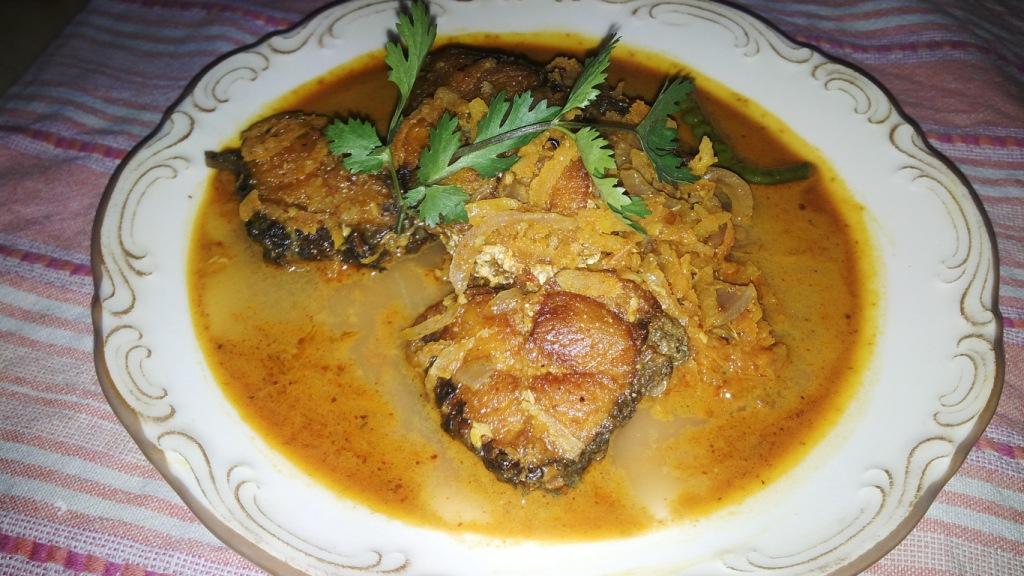THE ESSENCE OF FOOD AND FOLK – from Assam
November 2, 2013Prerana Choudhury
Rini Barman
an excerpt from a paper presented at the Jamia Milia Outreach Seminar held in 18 april,2013.
‘lao kha, bengena kha, bosore bosore barhi ja
maar’o xoru, baper’ou xoru, toi hobi bor goru’
This lyrical couplet sung on the first day of Bohag or Springtime Bihu of Assam reflects how significant and necessary the ideas of food, growth and nourishment are to life and existence in general, and within the broader realm of that which we call folk aesthetics. Sung while giving cows and buffaloes a wash, farmers and peasants wish for growth and sustenance of their cattle, recite the lines in an incantatory note that heralds the onset the bountiful in nature. Bohaag or Springtime, as is common across all cultures, is a celebration of life; of birth and regeneration.
The bond between food and eros is inextricable; they are both an assertion of life-instinct. In the wide corpus of rituals, both sacred and secular, Vedic and non-Vedic, food forms an essential component be it in the form of feasting by members of the community or as offerings to the dead to satiate and thereby please them. Food becomes not just an indelible aspect of performing these colloquial rituals but also a metaphor of continuity and lineage; it is by commemorating any event with food that members of a community re-establish their links with each other and also re-confirm their presence and belonging to their society. In this manner, food serves as a common thread binding a cultural assimilation of people together.
One of the great obstacles about thinking of food as a form of art is that we are accustomed to thinking of food as a assortment of flavours and textures that, although pleasurable, lack meaning. To delve deeper into the relation between food and folk aesthetics, one needs to look at ‘poetic culinaria’ that could express artistic ideas in the same manner that a line of poetry is meant to communicate more than the sum of its words. While on the one hand we can associate food with eroticism in an essentially phenomenological sense, there is also an integral connection between the two ‘intimately interrelated human preoccupations of food and sex’. According to Mark Leichty, there is a ‘doubleness of food and sex’: both are physical, sensual and symbolic channels through and between which cultural meanings ‘naturally’ flow; both are simultaneously domains of pleasure and of the production and reproduction of species; and both are interfaces between the material and the imaginary, the corporeal and the social, and nature and culture.” This holds true from the basic connection between the two in that they both serve as the basic imperatives to survival of the species to the more ulterior commonalities that exist in the structure of ‘culinary and sexual consumption’, in the context of South Asia specifically. Hence the extensive network of socio-cultural and religious rituals that institutionalises and mediates the hunger drives; a taming of the corporeal body to create and maintain the social body[i].
The culture called ‘food’ of the common folk doesn’t employ only a single sensory modality but fuses all the senses crucial for a mundane day-to-day living. Nabina Das, a contemporary poet from Assam writing in English, touches subtly on the nostalgia that food and memory carries in the prose-poem ‘Come, Aitaa’, in which the current of socio-political underpinnings cannot be ignored or wished away. The conjoining of the personal and the political, the inert and the violently volatile, all combine to create a dreamscape that is at once beautiful and shocking. “Come Aitaa, she says… we want radishes in this year’s garden green gourds climbing a common fence, sure, you can have some also coriander to sprinkle on the pitika for a late afternoon meal bhoot-jolokia that no one will eat, the army fancies it now we know the newspapers have it all, the tea shops get their fortune told..”
The oral written continuum as evident from this instance, then, relates to how food links the bodies to the earth, and to other individuals who share the same meal. It is in this context that the festival of Magh Bihu must find mention. Magh Bihu or Bhogali Bihu marks the occasion of harvesting of crops. The logic of commensality that pervades the social-cultural ethos of the country and that also finds feature in several religious and ritual events of Assam surprisingly take a setback in Magh Bihu celebration when everyone from across all social classes come together to eat, drink and make merry together as one. In a society otherwise driven by caste, class and communal rifts, the practice of overcoming these social barriers and engaging in the ritual celebration of feasting together makes ‘food’ a strongest connecting factor which very interestingly subverts the dictates of ‘purity and pollution’ over other normative customs of the community.
Folk aesthetics dominate the Bihu celebrations in this part of India’s northeast, in which it is the agricultural calendar and cyclical seasons that determine man’s interaction with nature and the subsequent cultural expressions. It is customary to prepare traditional rice-cakes and sweetmeats out of newly harvested rice flour, jaggery, coconut and sesame seeds. Meals on the day of Uruka are laid out on freshly cut banana leaves that as the common saying goes, instills in the food items its own smell and flavour. The eating experience in particular and the festival of feasting in general, then, is an accumulation of the senses and their celebration- where the corporeal, the tactile and the olfactory all assimilate to create in us both memory and identity. It is therefore important that the body be constantly well-fed, since starving would, in effect, efface daily cultural memory. One’s sense of belonging to his/her community is created not by being present in that specific event or get-together only but also by the largely sensory and sensuous experience that is gathered by one’s familiarity to his milieu. In the body is inscribed a memory of time that transcends it. Scholars have asserted how smell and taste are more deeply ingrained in our memory[ii] than the visual and aural.
In the body of folklore from Assam, we also get an insight into women talking about their bodily experiences, primarily hunger, through both literal and symbolic means, thereby becoming the agencies of culinary constructions (de-constructions, rather). For example, in one particular song from the vast expanse of Goalporia lokogeet (folk songs of Goalpara, a region of Assam): Maankacharer sikon sirare bondhu, / Garu baandhaar doi, Bhor pet khaya aaisen kene, Monor kotha koi bondhure- the figure of the beloved is questioning her lover on hedonistically engaging in feasting because she gets no time to talk about her love. Similarly, in a popular bihu-geet that goes as follows-
Luit’or bali bogi dhoke dhoki
Kacho’i konee pare lekhi
Gaat’e jui jole xoriyoh bagore
Dhon’ok panighate dekhi.
Sage belbela’i kowai kelkelai
Kaak pet’or kotha kom
Ene money lage tomak oi moina
Xorir’ot xumuwa’i thom
The man voices his desire to embrace his lover and keep her within his body. Like the abundant nature imagery in these songs and using them as similes and metaphors, the song uses the image of a river-turtle laying eggs on the white sand of the shores of the Luit (the river Brahmaputra). This has a clear connotation of both sexual desire and fertility. The lover mentions that his body burns with desire and the pit of his stomach bubbles with many untold secrets. All of these capture the mood of a lover pining for his beloved. Sexuality has remained a contested domain as food traditions act as the link of the community to their history, as well as to a historical tradition of resistance.
Fishes occupy the predominant food item in the ‘edible artscape’ Uruka, which are prepared in numerous ways, each variety of fish having its own unique accompaniment of vegetable, souring agents, pot-herbs (xaak) and spices. The cook occupies a special position in any culinary tradition who embodies all aspects of the sensory realm; how can we divorce the tactile experience of cutting a fish and mixing it with the right balance of salt and turmeric from within the broader culinary culture of consuming fish? In the poem ‘How to cut a Fish’, contemporary poet Nitoo Das[iii] takes on an authoritative voice that dictates the proper way of cutting a fish, a task familiar to women more than men in the domain of the kitchen. Hence the emphasis that to cut it, one must sit woman-like, i.e. bent sitting on the floor, ideally. At some level, the poem can be read as making a point of connection between the raw fish at hand, secured by the fisherman (‘nature’) whose touch and feel is necessary to wholly appreciate and consume the culinary delicacies that shall prize the dining area (‘culture’). Or could it also draw our attention to the ‘victimhood’ of the fish, of the ‘body’ that is to be soon consumed despite the ‘resistance of the white flesh staring eye’? The imagery and tonal contours of the voice speaking in the poem ranges from the raw to the violent; yet the violence evoked would be more of the organic sort than alluding to anything destructive. The corporeality of the two bodies- that of the fish being cut and of the one cutting it- becomes juxtaposed.
Benjamin Aldes Wurgaft in his essay ‘Incensed: Food Smells and Ethnic Tension’ talks about how the “history of food has largely been written as the history of taste, at the expense of the other senses”, and the sense of smell- being visceral- is associated with the unfamiliar and the foreign, that which is to be tamed within the site of civilisation. An occasion that celebrates harvest and feasting, with its emphasis on cooking outdoors, shifts the somewhat trapped territory of the cook and the cooked to an open domain where smells of all items mingle and create an ambience of plenitude. Fishes, raw and cooked, pervade the essences of the festival, alongwith poultry, vegetables, pot-herbs, bamboo shoot, Khaar and Posola- each having its distinct and strong smell, that contributes to the formation of identity nuances as much as the specificities of the aural and visual realms.
Uddipana Goswami’s subversive verses are also iconoclastic, in inspiration and function. In her poem ‘Mother Goddess Kamakhya’[iv], the power of images and myths provide a verbal representation of hunger and satiation of the goddess, as understood in the conventional religious sense of the term (the archetypal destructive goddess). She says- ‘The mother goddess loves blood./ She drinks thirstily/ Goat-blood, pigeon-blood, bull-blood./ And once a year, she menstruates./ A great event: the only time her devotees/ Consider menstrual blood sacred./ (You cannot worship a vagina/ And expect it will not menstruate’, satirising the political bloodletting of the Assamese culture-scape through the female experience of menstruation, which is often subjected to constraints of controlling hunger and fasting, as has been mentioned already.. Folklore is an echo of the past but at the same time a vigorous voice of the present, so we are looking at the timelessness of such an understanding that is past and trying to relocate it with the changes and continual fragments that have survived the tussles of several class-hunger conflicts and forces of social stratification. Thus, a tale like Tejimola is not a dictated text with ‘inter-linear’ translation, but a living oral recitation delivered to a responsive audience for cultural purposes of custom and taboo, release of aggressions through fantasy, pedagogical explanations of the natural world and the applications of the pressures of conventional behaviour.
The bond between the “word of the mouth” and food is prominent in the Grandma’s folktales by litterateur Lakshminath Bezbarua . In the tale ‘Owe-Kuwori’ [fruit princess],Owe Kuwori is abandoned by her mother, with whom a prince falls in love but cannot marry her in her form. Here comes the character of an old beggar woman who helps him out to get united with his bride by use of a potion , made of simmering fire made of rice-husk and paste of athiya-kol (a heavily seeded variety of banana).
While an abundance of harvest calls for celebration with feasts and merry-making, the occasion of Kati Bihu (observed in the month of November) is an austere one, a plea to god to bless us with a good harvest. One worships the sacred Tuloxi plant (sacred basil) that is emblematic of piety and veneration, a ubiquitous presence in every rural household of Assam; and earthen lamps are lit. A mixture of gram, moong, coconut, grated gin and salt, alongwith banana and other fruits, are first offered to the deity and then eaten after performing simple prayers. It is through the act of eating the Proxaad that one receives the blessings of the lord and through its consumption, there is hope achieving what is wished for. The idea of receiving fulfilment and blessings through sensory practices like this that requires one to be in contact with the blessed object (or food, in this case) reflects folk and animistic beliefs that, within a paradigm of superiorising the intellect, may be labelled as ‘naïve sensualism’.[v] The phrase ‘khaar-khua Axomiya’, literally meaning ‘the khaar-consuming Assamese community’ could be symptomatic of such a derogatory attitude that the region faces alongwith the entire Northeast from mainland India. An alkaline mindset alongwith a dose of humid climate are what create the proverbial ‘land of the laahe-laahe’. What better examples than food items to metaphorically allude to a people’s characteristic features? If khaar constitutes one end of Assamese identity, the other end could be summed up by Posola and murighonto; each of the two dishes prepared by remnants left after the primarily eatable is done with and digested. Peculiarity about the Assamese eating scene is the unashamed accumulation of leftovers- vegetable stalks, fish bones, fish heads, meat and chicken bones- all meticulously chewed until not a drop of juice is left in it. This is perhaps also symbolic of the way stories and storytellers of food perpetuate their tales through little residual remnants; picking up on the trails, building up on them through a fall-back on tradition and memory, hearkening on the dead-and-gone yet recreating them through the body and being of the storyteller.
[i] Leichty, pp. 4-5
[ii] Edwidge Danticatis Kitchen History,Loichot, Valérie, 1968-Meridians: feminism, race, transnationalism, Volume 5, Number 1, 2004, pp. 92-116 (Article) Published by Indiana University Press DOI: 10.1353/mer.2004.0055
[iii] Das, Nitoo. Boki. 2008,Virtual arts collective.
[iv] Goswami, Uddipana. 2010. We Called the River Red, Poetry from a Violent Homeland. New Delhi: Authors Press
[v] Joanna Tokar -Bakir, 2000, pp.69





